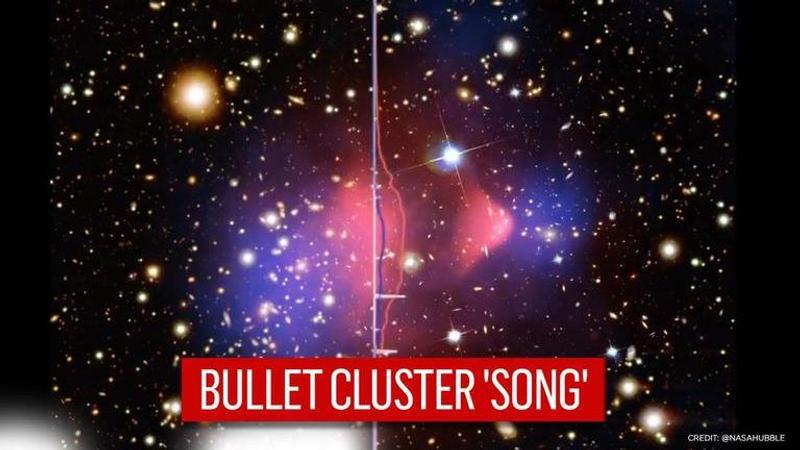Published 17:25 IST, January 7th 2021
‘Turn it up’: NASA shares ‘music of spheres’ as it digitally converts Bullet Cluster image
“Turn it up,” NASA wrote in the caption, as it assigned pitches and volumes to the elements of the Hubble’s image of the E 0657-56 galaxies.

NASA on January 6 shared the ‘music of the spheres’ as it digitally converted the cosmic image of the Bullet Cluster galaxy into a melodious tune using data signification. Taking to its official Twitter handle, the space administration shared the music produced by the mysterious dark matter of the cosmic realm for the astrophiles to experience it via “other sense than just sight”. “Turn it up,” NASA wrote in the caption, as it assigned pitches and volumes to the elements of the Hubble’s image of the E 0657-56 galaxies located 3.72 billion light-years from the Earth.
The dark matter’s gravity is seen distorting the lights from the distant colliding galaxies known as Bullet Cluster, producing the "normal" matter (pink), in the form of hot gas, wrenched away from dark matter (blue) when looked from the multi-wavelength observations. The X-rays from Chandra depicted different levels of brightness which NASA converted to varying pitches and volumes.
“ Each translation below begins on the left side of the image and moves to the right. No sound can travel in space, but sonification provides a new way of experiencing and conceptualizing data,” NASA explained. “Sonification allows the audience, including blind and visually impaired communities to ‘listen’ to astronomical images and explore their data,” it added.
In the data sonification audio, as the separation occurs during a collision of two massive galaxy clusters, NASA strategically converts the phenomenon into sounds of a specific frequency range. Data showing dark matter are represented by the lowest frequencies, while X-rays showing normal matter are assigned to the highest frequencies. The galaxies in the breathtaking image were extracted from the Hubble data, NASA informed in a release. Within each layer of Hubble’s capture, the sound detonated varies from mid-range frequencies to extremely high, and the pitch is set to increase from the bottom of the image to the top so that objects towards the top produce higher tones.
Sound of constellation 'Columba'
NASA had earlier produced sounds from the image of the constellation Columba, embedded in the globular cluster Caldwell 73 or NGC 1851. "A globular cluster is a spherical group of stars that are gravitationally bound to each other, with most of the stars concentrated at the cluster’s center,” the agency explained, as it shared the melodious tunes from the sonification. “Astronomical objects near the bottom of the image produce lower notes, while those near the top produce higher ones,” NASA informed alongside the mesmeric clip, which largely astounded the cosmophiles.
Updated 17:23 IST, January 7th 2021



